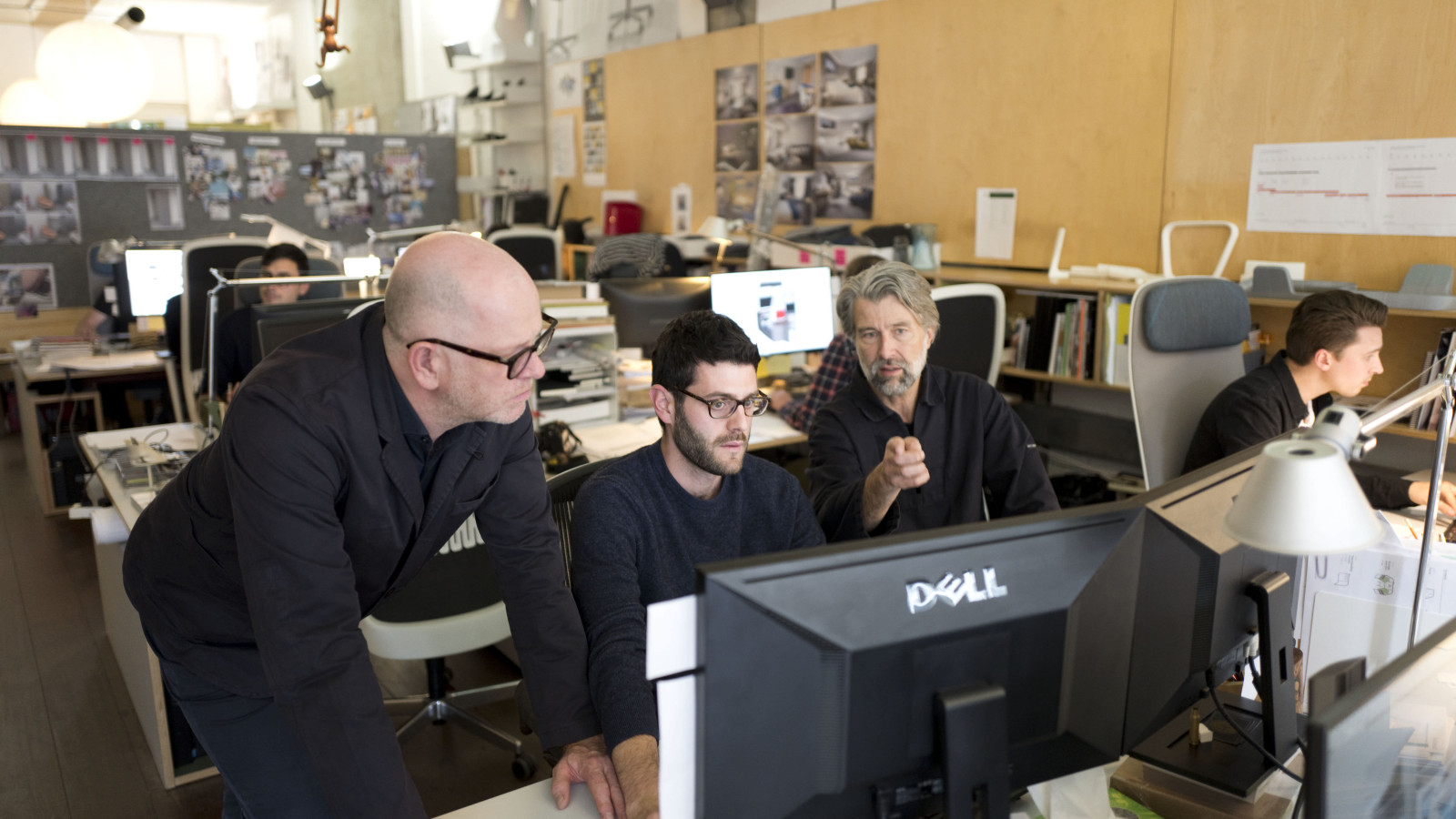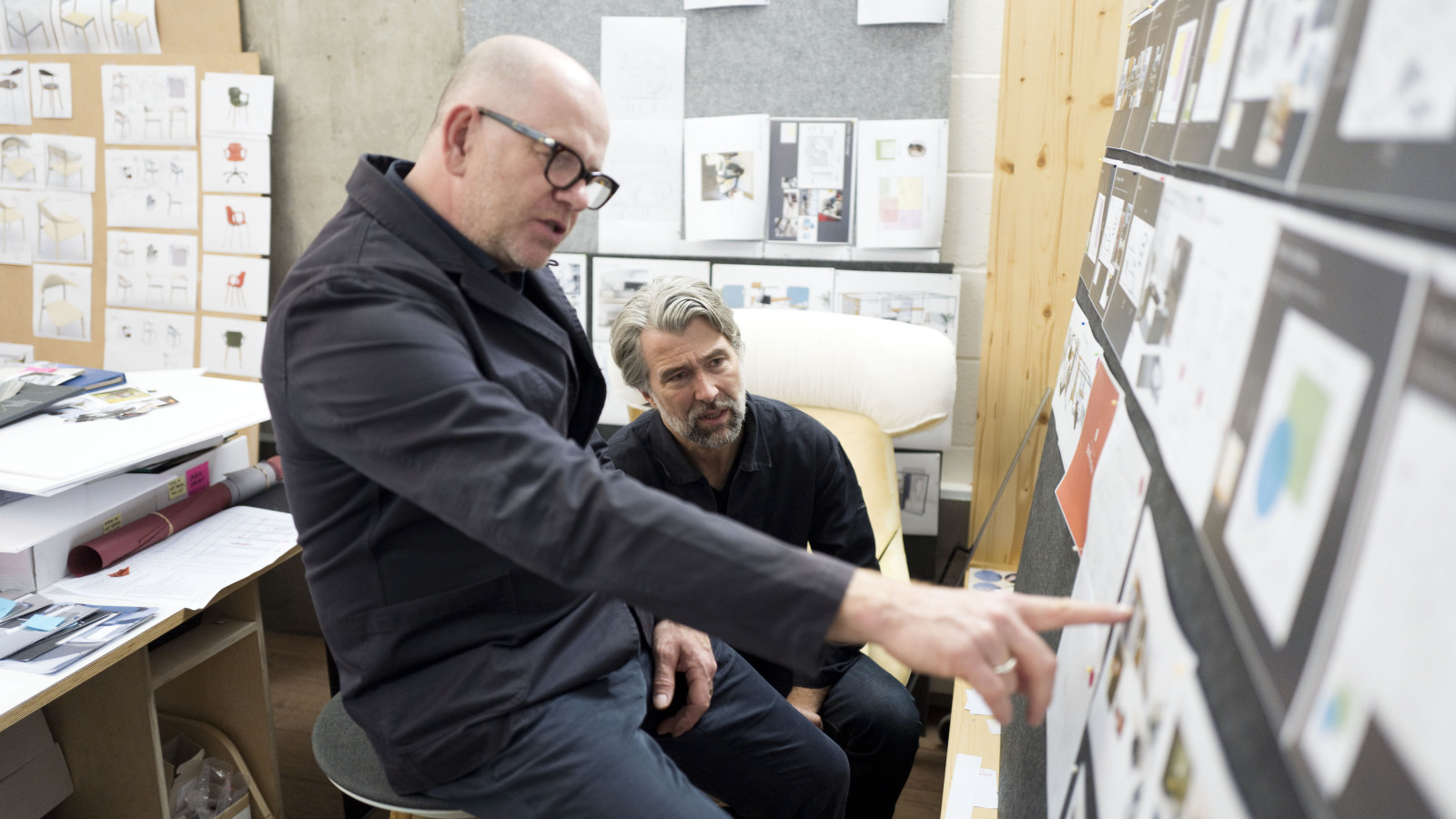Continuing at the Edge
“It all started with a knuckle,” says Luke Pearson with a chuckle. “Or more precisely, a corner knuckle.” The designer, one half of design studio PearsonLloyd with Tom Lloyd, is talking about the Edge Table System that was launched with Modus in 2015. Said knuckle is in fact the cast aluminium piece that forms the corner joints of the table – the meeting point for the extruded horizontal supports and the sturdy legs.
We are talking about a detail that might go unnoticed by many users of the system. The design is imbued with a visual simplicity that is nevertheless underpinned by these carefully engineered structural components. The strength of that knuckle gives the table the potential for multiple size configurations, always carried off with a coherent visual identity.
But the language of the table’s structure always had the potential to be expanded to other complementary furniture items. Indeed, Clerkenwell Design Week 2017 ushers in the ‘extension of the edge’ with the advent of upholstered pieces: an armchair, 2 and 3 seater sofa, a high back version, a seating platform, alcove and bench seating and an ottoman. Furthermore, a coffee table and various credenza configurations join the table system.
Options abound but the premise of the design is simplicity and versatility. “We didn’t want flexibility to burden the design’s lightness,” states Pearson. The table system and the new family of pieces that now join it are a far cry from the heavy, fixed, corporate desking systems and office furniture that are increasingly falling out of favour. While accessories can be specified, such as moveable storage boxes and screen dividers, the entire collection is free of superfluous gizmos that are unlikely to ever be used.
Indeed, the system has been value engineered for efficiency and has the fewest components, positioning it at a competitive price point. Furthermore, it boasts significant eco-credentials as it uses a minimum of raw materials, has an aluminium frame and a high-recycled content.
The rational design approach, as the designers are keen to point out, has given rise to a range that is well suited to the start-up business culture that favours a more nimble approach to their working environment and the flexibility to shift and expand its functionality. This links to a growing willingness by companies to embrace a diversity of work scenarios, recognising that people are no longer wired to one solitary workstation.
Offices have become places where people come and go, meet, plan and consult. In many instances, the overall environment has relaxed and embraced more of the features familiar at home or in a hospitality setting. As Tom Lloyd points out, “We’ve observed that the tech community won’t specify anything that looks like office furniture. There’s something less self-conscious about their approach – a sort of ‘trestles and planks’ informality akin to working at your kitchen table, albeit with efficiency.”
PearsonLloyd Edge steps up to these challenges, catering for the most simple of requirements (a standalone wood-topped table) to the most needy (a fully-flexible desking system). As Tom Lloyd concludes, “The flexible functionality can grow with the user – an adaptable, future-proofed design that should last for years.”


